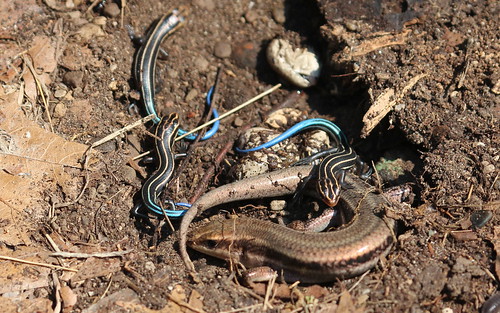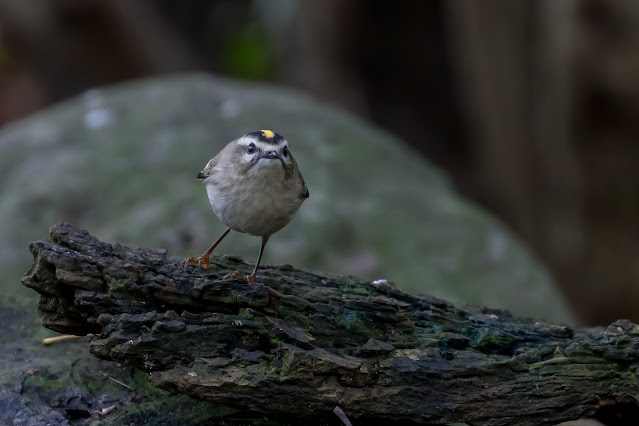The hatchlings
The skink researcher came to the cottage today and we checked on the skink nest.
At least three of the eggs had hatched, possibly more. The egg at the top appears to be just starting to hatch out.
The scientific stuff -
The five-lined Skink (Plestiodon fasciatus) is a small, smooth-bodied lizard, with black or grey colouring and five white or yellow stripes along the back. The colour pattern diminishes with age as the stripes darken, and the contrast is less apparent in adults. Juveniles have bright blue tails, but this also diminishes with age. In adults, the tail is grey. Adult males can be distinguished from females by their broader heads and bright orange jaws and chin. Adults can reach a length of 20 centimetres. Skinks are very active predators, and they dart quickly from place to place looking for insects, worms or other invertebrates.
The southwestern populations of the five lined skink, are Endangered Provincially and Nationally, and occur in Carolinian forest and prefer wooded habitat with sandy soil and ground cover. They use woody debris as shelter and hibernate by burying themselves in the soil.
Plestiodon fasciatus
At least three of the eggs had hatched, possibly more. The egg at the top appears to be just starting to hatch out.
The scientific stuff -
The five-lined Skink (Plestiodon fasciatus) is a small, smooth-bodied lizard, with black or grey colouring and five white or yellow stripes along the back. The colour pattern diminishes with age as the stripes darken, and the contrast is less apparent in adults. Juveniles have bright blue tails, but this also diminishes with age. In adults, the tail is grey. Adult males can be distinguished from females by their broader heads and bright orange jaws and chin. Adults can reach a length of 20 centimetres. Skinks are very active predators, and they dart quickly from place to place looking for insects, worms or other invertebrates.
The southwestern populations of the five lined skink, are Endangered Provincially and Nationally, and occur in Carolinian forest and prefer wooded habitat with sandy soil and ground cover. They use woody debris as shelter and hibernate by burying themselves in the soil.
Plestiodon fasciatus


Comments